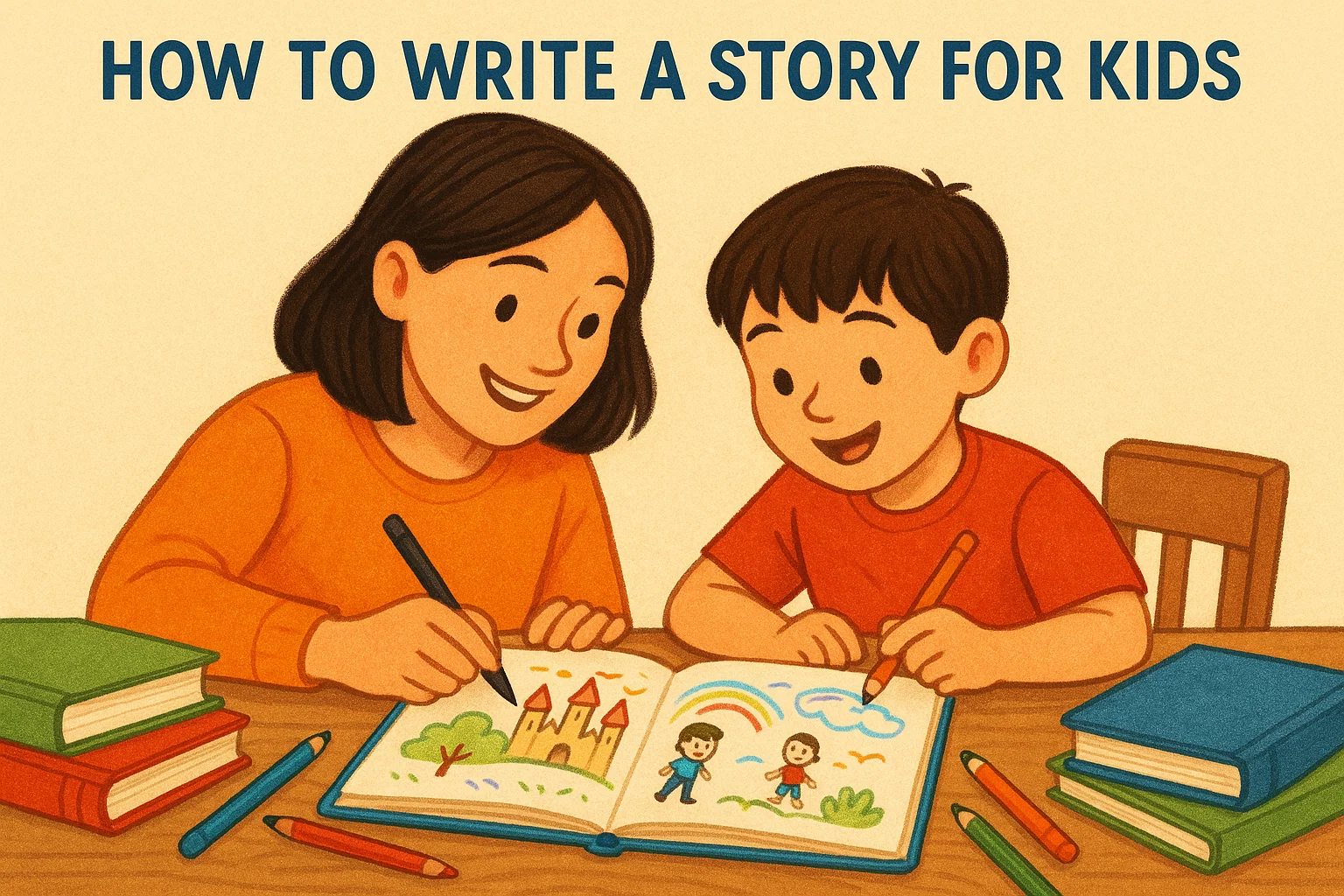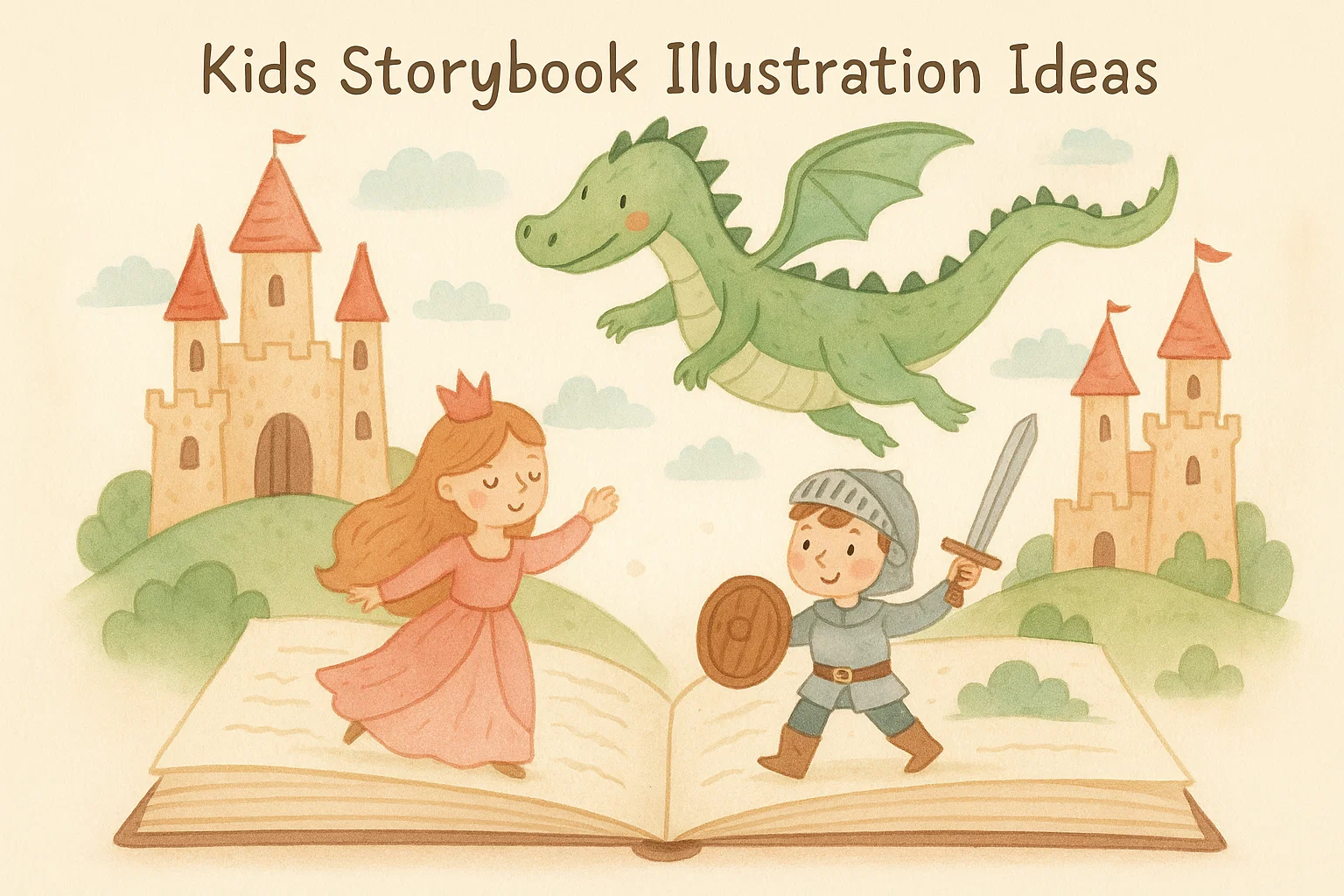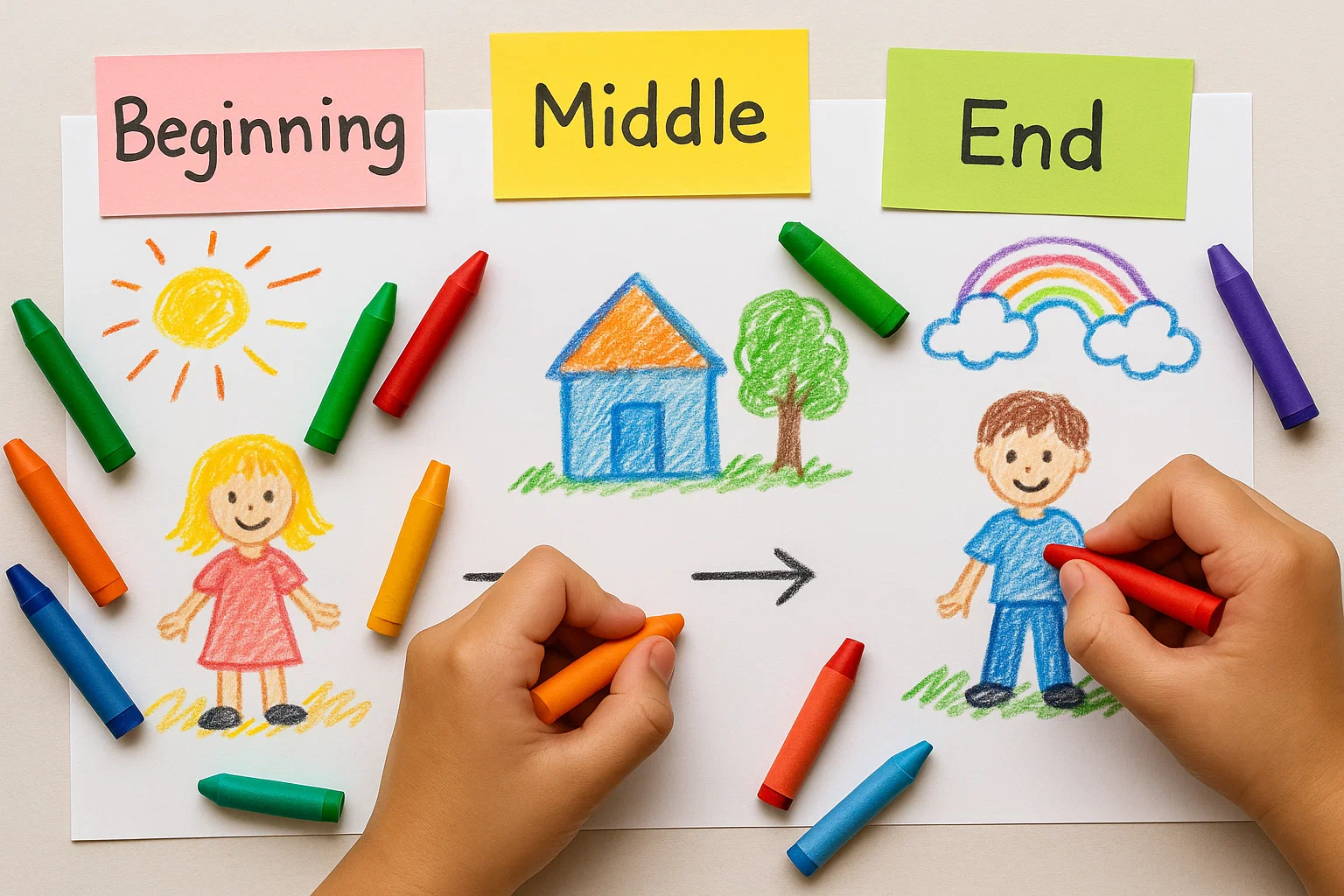Sounds fun, right? It is. But it’s also trickier than it looks. Kids can sniff out boredom faster than adults scrolling through a slow-loading website. They crave stories that make them feel something curious, brave, a little scared, or joyfully silly.
So if you’ve ever stared at a blank page wondering how to write a story that a child will actually love, relax. You’re about to learn how to do it step by step simply, creatively, and without needing a PhD in literature.
Why Writing for Kids Feels Magical (and Trickier Than It Looks)
Writing for children isn’t just about toning down vocabulary or adding cute animals. It’s about seeing the world the way kids do vivid, fresh, and full of wonder.
Children notice things we forget. The hum of a fridge. The smell of crayons. The idea that clouds might be giants taking naps. When you write from that angle, your story instantly becomes alive.
But here’s the challenge: kids also have zero patience for long, dull setups. They want to jump straight into adventure. So every line has to pull them in fast.
The trick is to balance simplicity with sparkle. Use clear sentences, short paragraphs, and rhythm. A good children’s story reads like a song you don’t just read it; you feel it moving.
Think Like a Child, Not Like a Writer
Here’s your first golden rule: forget you’re an adult.
Kids don’t think in structure and subplots. They think in possibilities. To them, anything can happen and that’s your greatest weapon as a storyteller.
Try this exercise: spend five minutes observing a child (or remembering yourself as one). Notice what grabs their attention. Maybe it’s a bug crawling across the floor, or a puddle shaped like a dinosaur. That’s where your stories live in the details adults overlook.
Ask yourself:
- What would make a five-year-old giggle?
- What would make an eight-year-old gasp?
- What would make a ten-year-old cheer?
Answer those, and you’ll find your story’s heartbeat.
Build a Simple but Strong Story Idea
You don’t need a complicated plot to hook young readers. In fact, the simpler, the better.
A great children’s story starts with one small idea that grows. Maybe:
- A toothbrush that doesn’t want to brush teeth anymore.
- A lost cat who joins a marching band.
- A boy who accidentally plants jellybeans that turn into rainbow trees.
See? Simple setups but bursting with imagination.
When you’re brainstorming, look for ideas that:
- Involve a clear goal (“She wants to find her missing socks.”)
- Have a bit of tension (“But one sock doesn’t want to be found.”)
- Lead to a fun resolution (“Turns out, the socks were planning a surprise party.”)
Keep your theme gentle but meaningful friendship, courage, kindness, curiosity, forgiveness. Kids love a story that feels fun and teaches something quietly along the way.
Create Characters Kids Actually Love
Now let’s talk about your cast.
Kids don’t fall in love with flawless heroes. They adore relatable weirdos someone who makes mistakes, laughs too loud, or forgets to tie their shoes.
Think about your favourite children’s characters: The Gruffalo, Matilda, Paddington Bear. None of them are perfect. They’re lovable because they’re flawed, curious, and slightly odd.
A few quick character tips:
- Give them one clear trait (brave, clumsy, overly polite).
- Let them talk and act like real kids not mini adults.
- Add quirks. Maybe they collect buttons. Or talk to their shadow.
- Give them a simple dream or fear that drives the story.
And names? Keep them short and fun. Milo the Mole works better than Sir Milotharius of the Mudlands.
Keep Your Plot Short, Clear, and Fun
Think of your story like a playground. Kids should know exactly where to run and climb.
Every children’s story whether 200 words or 2000 should follow the 3-part magic rule:
- Beginning: Set up the problem or adventure.
- Middle: Show the challenges or fun chaos.
- End: Solve it with a satisfying twist or message.
Example:
A little girl loses her balloon (beginning). She chases it through the city, meeting quirky strangers (middle). Finally, she realises the balloon wanted to see the world, and she lets it go with a smile (end).
Short, emotional, and memorable.
The best stories move quickly. Avoid long backstories or fancy introductions. Drop your reader straight into the action like:
“It was the day the moon forgot to rise.”
Now that makes kids want to know what happens next.
Sprinkle Imagination Without Losing Logic
You can let pigs talk, clocks dance, or chocolate rain from the sky but make sure your world still follows its own rules.
Fantasy only works if it feels consistent. If a frog suddenly flies on page ten, there better be a reason (magic bubblegum? space helmet?).
Use imagination to add wonder but anchor it in emotion or purpose. Kids will accept a world where chairs sing lullabies if it helps your main character find courage or friendship.
And don’t forget the senses. Children experience stories through sound, touch, and taste. Instead of saying “It was a scary forest,” say:
“The trees whispered secrets and the air smelled like forgotten socks.”
You’ll instantly transport them into your world.
Dialogue That Sounds Real (Not Adult-ish)
This part’s huge. Many children’s stories fall flat because the dialogue sounds like grown-ups pretending to be kids.
Keep it short, playful, and natural. Kids speak in bursts, not paragraphs.
For example:
Wrong:
“I believe we should proceed to the mountain immediately,” said Ben.
Better:
“Let’s go! The dragon’s waiting!” shouted Ben.
See the difference? One sounds like a kid. The other sounds like a tax lawyer.
If you’re unsure, read your lines aloud. If you wouldn’t hear a child say it on a playground, rewrite it.
Bonus tip: give each character a little speech quirk. Maybe one always rhymes. Another mixes up words. Those details make dialogue sparkle.
Add a Heartwarming or Funny Ending
Endings are where readers especially young ones decide if they’ll remember your story.
The perfect ending should make them smile, laugh, or quietly go “aww.”
Here are a few go-to endings that work:
- Circular ending: The story loops back to the start but with a twist (“And that’s why the cat still wears his crown.”)
- Moral ending: The character learns a small life lesson (“She finally realised it’s okay to be scared sometimes.”)
- Funny ending: The last line surprises or flips the story (“And then the broccoli sneezed again!”).
Avoid over-explaining or preaching. Kids understand messages through what happens, not what’s told. Let the emotion land naturally.
Edit With a Child’s Eye (and a Parent’s Heart)
Once your draft is done, the real magic happens editing.
Read it aloud. Children’s stories are meant to be heard. You’ll instantly spot awkward rhythms or dull parts.
Ask yourself:
- Does every sentence earn its place?
- Are there too many adult words?
- Would this make a child laugh, lean closer, or yawn?
Then, if possible, read it to an actual kid. Their reactions will tell you everything. If they fidget, trim it. If they giggle, keep it.
Finally, do a parent check. Does your story feel safe, kind, and full of meaning? Parents appreciate stories that both entertain and nurture values.
Bringing It All Together: Your First Children’s Story Blueprint
Here’s a quick formula you can follow next time you sit down to write:
| Step | What to Focus On | Example |
|---|---|---|
| 1. Idea | Start small but imaginative | A broom afraid of heights |
| 2. Character | Flawed, funny, or curious | “Breezy the Broom” who wants to fly |
| 3. Problem | Something kids can relate to | She keeps bumping into doors |
| 4. Adventure | Fun journey or challenge | She joins a flying lesson with butterflies |
| 5. Resolution | Warm, funny, or wise ending | She learns that flying isn’t needed to feel light |
Simple, right? That’s your mini blueprint.
The key is not perfection it’s connection. A child doesn’t remember flawless grammar. They remember how your story made them feel.
So grab that notebook. Let your imagination run barefoot through the mud. Write the story that your younger self would’ve loved to read under the covers with a torch.
Because somewhere out there, a child’s waiting to meet your characters and maybe, just maybe, they’ll never forget them.
Example Story: Breezy the Broom Who Wanted to Fly
Breezy was not your ordinary broom. She was small, a little crooked, and had the softest bristles in the whole cupboard. Every morning, when sunlight spilled through the kitchen window, she’d sigh and whisper, “One day, I’ll fly.”
The mop would roll his eyes. “Brooms don’t fly, Breezy. We sweep.”
But Breezy refused to believe it.
When the wind whistled through the door, she’d lift her handle and pretend to soar. She imagined zooming past clouds, waving at birds, and sweeping the stars clean.
Then one blustery afternoon, the door blew open. A gust of wind whooshed through, knocking Breezy off her hook and whoomp! out into the garden. She landed bristles-first in a patch of daisies.
For a moment, she was too shocked to move. Then she looked up. Above her, butterflies danced in the air, wings glittering in the sun.
“Wow,” Breezy breathed. “You can fly!”
A bright blue butterfly landed on her handle. “Of course we can! Who are you?”
“I’m Breezy. And I’ve always wanted to fly too.”
The butterfly tilted her head. “Well, we can’t give you wings, but we can show you what it feels like.”
So the butterflies surrounded her ten, twenty, maybe fifty and flapped their delicate wings together. The air shimmered. Breezy wobbled, bounced, and suddenly just a little lifted off the ground!
“Look at me!” she cried. “I’m flying! I’m really – oh no -”
A gust of wind spun her sideways, sending her tumbling into the garden pond with a splash.
The butterflies gasped. Breezy popped up, soaked and giggling. “That was amazing!”
They helped her out, dripping and happy. “You didn’t fly for long,” said the blue butterfly, “but you did it!”
Breezy thought for a moment, staring at her reflection rippling in the pond. “Maybe flying isn’t about being in the air,” she said softly. “Maybe it’s about feeling brave enough to try.”
The butterflies smiled. “Exactly.”
When Breezy finally rolled back inside that evening muddy, wet, and smiling the mop shook his head. “You’re a mess.”
“Maybe,” Breezy grinned, “but I’ve been to the sky.”
From that day on, she swept every floor with extra sparkle. And whenever a breeze passed through the kitchen, she’d lift her handle just a little ready, just in case the wind decided to dance again.
Why it works:
- Simple idea: a broom that dreams of flying.
- Relatable emotion: wanting something big and brave.
- Clear structure: beginning (dream), middle (adventure), end (lesson).
- Moral: Courage matters more than perfection.
That’s how you weave heart, humour, and imagination into a story kids will remember one that sweeps them right off their feet.

Rachel combines her technical expertise with a flair for clear, accessible writing. A graduate of the University of Edinburgh, she specializes in creating detailed tech-focused content, Govt Jobs, Payslips that educates our readers about the latest in web development and SEO tools at Spinbot blog.


